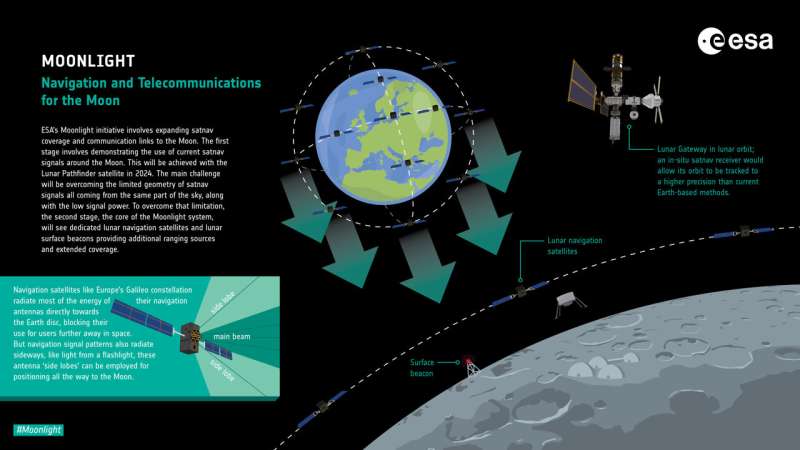Astronomers discover metal-rich galaxies in early universe
Tuesday, 28 February 2023 04:35 While analyzing data from the first images of a well-known early galaxy taken by NASA's James Webb Space Telescope (JWST), Cornell University astronomers discovered a companion galaxy previously hidden behind the light of the foreground galaxy - one that surprisingly seems to have already hosted multiple generations of stars despite its young age, estimated at 1.4 billion years old.
"We fo
While analyzing data from the first images of a well-known early galaxy taken by NASA's James Webb Space Telescope (JWST), Cornell University astronomers discovered a companion galaxy previously hidden behind the light of the foreground galaxy - one that surprisingly seems to have already hosted multiple generations of stars despite its young age, estimated at 1.4 billion years old.
"We fo Public work begins on UK's largest commercial satellite control centre
Tuesday, 28 February 2023 04:35 Work has started on Inmarsat's new eight-floor headquarters, which will host the company's Satellite, Network and Cyber Operations Centre and feature advanced workspaces for employees - alongside games areas, a gym, a relaxation area, and a rooftop bar.
The company has been developing plans for the new space since 2019, with the lease at its current headquarters on Old Street Roundabout fi
Work has started on Inmarsat's new eight-floor headquarters, which will host the company's Satellite, Network and Cyber Operations Centre and feature advanced workspaces for employees - alongside games areas, a gym, a relaxation area, and a rooftop bar.
The company has been developing plans for the new space since 2019, with the lease at its current headquarters on Old Street Roundabout fi Nicola Fox named associate administrator for NASA Science Mission Directorate
Tuesday, 28 February 2023 04:35 NASA has found its new associate administrator of the Science Mission Directorate in Heliophysics Director Nicola Fox.
Fox will replace acting administrator Sandra Connelly atop the Science Mission Directorate effective immediately, according to a press release from NASA.
NASA administrator Bill Nelson made the announcement on Monday, lauding Fox for the work she has done as dire
NASA has found its new associate administrator of the Science Mission Directorate in Heliophysics Director Nicola Fox.
Fox will replace acting administrator Sandra Connelly atop the Science Mission Directorate effective immediately, according to a press release from NASA.
NASA administrator Bill Nelson made the announcement on Monday, lauding Fox for the work she has done as dire SpaceX launches new Starlink 'V2 Mini' satellites into orbit
Tuesday, 28 February 2023 04:35 SpaceX launched 21 upgraded "V2 Mini" Starlink Internet satellites from Florida's Cape Canaveral on Monday, to boost capacity for the global broadband network.
SpaceX announced "Liftoff!" in a tweet at 6:16 p.m. EST, showing the Falcon 9 rocket lift off from pad 40 against the sunset. The launch was delayed earlier Monday to allow radiation levels to drop following a solar storm.
SpaceX launched 21 upgraded "V2 Mini" Starlink Internet satellites from Florida's Cape Canaveral on Monday, to boost capacity for the global broadband network.
SpaceX announced "Liftoff!" in a tweet at 6:16 p.m. EST, showing the Falcon 9 rocket lift off from pad 40 against the sunset. The launch was delayed earlier Monday to allow radiation levels to drop following a solar storm. Seeing triple
Tuesday, 28 February 2023 04:00 Image:
Image:
This observation from the NASA/ESA/CSA James Webb Space Telescope features the massive galaxy cluster RX J2129. Due to Gravitational lensing, this observation contains three different images of the same supernova-hosting galaxy, which you can see in closer detail here. Gravitational lensing occurs when a massive celestial body causes a sufficient curvature of spacetime to bend the path of light travelling past or through it, almost like a vast lens. In this case, the lens is the galaxy cluster RX J2129, located around 3.2 billion light-years from Earth in the constellation Aquarius. Gravitational lensing can
U.S. Army extends Maxar’s contract for 3D geospatial data
Monday, 27 February 2023 20:09
The U.S.
Heliophysics director named NASA associate administrator for science
Monday, 27 February 2023 19:28
NASA has selected the head of its heliophysics division as its new associate administrator for science, responsible for a $7.8 billion portfolio of more than 100 missions.
Air Force navigation satellite to launch on Vulcan’s first national security mission
Monday, 27 February 2023 18:46
A U.S.
Mitsubishi makes strategic investment in Astroscale’s $76 million funding round
Monday, 27 February 2023 18:43
Astroscale said Feb. 27 it has raised $76 million from investors including satellite maker Mitsubishi Electric, which plans to add docking plates to Japanese national security spacecraft to make them compatible with the debris removal venture’s servicers.
Antarctic Peninsula glaciers on the run
Monday, 27 February 2023 15:00
Like many places, the Antarctic Peninsula is falling victim to rising temperatures. However, when scientists used radar images from the Copernicus Sentinel-1 mission acquired between 2014 and 2021, they were taken aback to discover just how the fast 105 glaciers on the west coast are flowing in the summer months.
#SocialSpace: Apply to join Juice launch at ESA mission control - CLOSED
Monday, 27 February 2023 14:00
#SocialSpace: Apply to join Juice launch at ESA mission control
Monday, 27 February 2023 14:00
Technical issue scrubs SpaceX commercial crew launch
Monday, 27 February 2023 11:31
A last-minute problem with a rocket ignition system halted a Falcon 9 launch of a NASA commercial crew mission Feb.



 Image:
Aurora over Wales
Image:
Aurora over Wales